Do you have mini flies swarming in your house around your houseplants or fruit bowl? If so, soon you will wonder how to get rid of gnats in your house. Although they seem to be innocuous bugs, gnats may rapidly become a nuisance that frustrates you and even damages your plants.
All of this being said, in this article, we are going to help you learn everything there is to know about gnats, such as what they look like, what attracts them, and, more importantly – how to get rid of them fast.
So, if you:
- are someone who is currently dealing with a gnat infestation;
- want to find out how the insects ended up on your property in the first place;
- are just curious.
This is the article for you! Let’s start with…
Table of Contents
What are gnats
As we’ve already mentioned, gnats are really, really small flying insects. Due to their size and overall appearance, many people mistake them for baby houseflies. Unlike houseflies, you’ll find these tiny bugs flying around in larger groups near their food source.
That said, there are 3 types of gnats that you can spot on your property – the so-called fruit flies, fungus gnats, and drain flies. As you can already guess by their names, the first like to eat mainly ripe or rotten fruits, the second can be found munching on fungi, and the third survives on organic materials found in your drain. And what do these nasty pests look like? Continue reading to find out.
What does a gnat look like
Now that you’ve learned what exactly gnats are, it’s time to talk about their appearance. Below you’ll find a detailed description of the 3 most common types of household gnats – fruit flies, fungus gnats, and drain flies.
Fruit flies
Adult fruit flies are miniature – 3 to 4 mm, including wings. They have round brownish-yellow or brownish-black bodies and huge (compared to their size) red eyes. Baby fruit flies look like worms and are light in colour. Their size can range from 3.5 to 5 mm.
Check also: How to Get Rid of Fruit Flies
Fungus gnats
Adult fungus gnats look very much like tiny mosquitos. They have small, dark grey bodies, long legs, and clear wings. These insects are 2 to 8 mm in size. Fungus gnat larvae have long, transparent bodies and black heads. In terms of size, baby fungus gnats are around 3 mm long.
Drain flies
This type of gnat can be as small as 1.5 mm. Drain flies are grey or tan in colour, with light wings. What distinguishes these insects from the other types of common house gnats is the fact that their bodies are covered in hair, which gives them a fuzzy appearance. When it comes to drain fly larvae, they are between 4 and 10 mm in size, dark in colour, and slender. They don’t have either eyes or legs.
Check also: How to Get Rid of Drain Flies
Do gnats bite?
It depends. Common household gnats, such as fruit flies, fungus gnats, and drain flies, do not bite humans. However, there are other species, like buffalo gnats, deer flies, stable flies, and biting midges that will bite you if given the chance.
And if you are wondering what does a gnat bite look like, the answer is tiny bumps, which can also be:
- Red
- Painful
- Itchy
- Swollen
What attracts gnats
Moisture and dampness
Gnats are rather fond of wetness, hence any site with humidity or dampness is like heaven for them. If you have overwatered houseplants, moist soil, or plugged drains, you are essentially rolling out the red carpet for them.
Rotting organic matter
For a gnat, the definition of a gourmet meal is anything that is rotting or decaying. Vegetables and overripe fruits, as well as any food that is about to spoil, are all strong draws. If you leave them out, your kitchen will soon hum with gnats. This is why you often find them close to garbage bins, composting containers, or places where food scraps tend to accumulate.
Sweet and fermented scents
Gnats are extremely sensitive to scents of sugar and fermentation, so you could say they have a sweet tooth. Ripe fruits, sweet drinks, and even alcohol all appeal to them. Therefore, if you have a half-full glass of wine or a sticky juice cup out, you have effectively extended an invitation to all the gnats in the vicinity.
Organic debris in drains
Gnats love the waste accumulating in drains. The perfect habitat for them to linger out and multiply is the blend of moisture and decomposing food particles. You therefore commonly find them close to bathroom drains, kitchen sinks, or garbage disposals.
Light
Certain gnat species are drawn to light, just like moths. At night, you can frequently see them flying around windows, lamps, or other light fixtures. Gnats will follow the glow from bright lights or open windows in the dark and enter your home, especially if there is food or moisture nearby to keep them around.
Are you dealing with a pest infestation?
You don't have to be alone in the battle against pests. Hire a professional pest expert!
Call usHow to get rid of gnats
So, now you know about the different types of gnats, how to tell them apart, and even what some of them like to eat for dinner. What’s left? Well, to learn how to get rid of the ones in your home. To make things easier, we’ve gathered the most effective DIY methods to get rid of gnats, with the first one being…
Set a vinegar bait
In a bowl, mix 2 tablespoons of apple cider vinegar, a tablespoon of sugar, half a cup of warm water, and a few drops of dishwashing detergent. Stir the ingredients well. Once the concoction is ready, grab a couple of small containers, such as jar lids, and pour a little bit of the mixture. Set the baits close to the areas infested by the gnats. The sugary traps will attract nasty pests and will kill them as soon as they come in contact with the solution.
Try the wine method
No, we aren’t asking you to break open a fine bottle of wine for a bunch of flying bugs – the one you use for cooking will be just fine. Similarly to the vinegar method, mix some of the wine with dishwashing liquid, and set a couple of traps around the infested parts of your home.
Give the candle trick a go
This homemade gnat trap is probably the easiest of the bunch. All you’ll need is a candle, a candlestick, a plate, and some water. Put the candle in the candlestick, position it in the middle of the plate, add some water, and light the candle. Then, turn off the lights in your home and wait. All of the pesky gnats will start gathering near the flame, which, you guessed correctly, will result in a gnat barbecue.
Make a fruit gnat trap
This one is basically a booby trap for bugs. Get a piece of fruit that is on its way to the bin, place it in a bowl, cover it with some plastic wrap, and finally poke a few holes in it. Set the trap where there are gnats and wait. What will happen is that the flying insects will enter through the holes, lured by the rotten fruit, but won’t be able to get out. From that point on, all that you have to do is get rid of them.
Buy some fly strip
Last on our list is the old-fashioned fly strip method. You know how it works – just get a roll, stick it in the gnat-infested area, and watch as the pesky creatures perish. Of course, this gnat-repellent option has a major downside – it’s just an ugly sight.
UV light traps
Particularly good for drawing in and eliminating gnats are UV light traps. These devices attract gnats and other flying pests using UV light, which then gets caught on adhesive boards or dead by an electric grid.
Install a UV light trap next to plants or in kitchens or other locations where gnats are most active. Usually easy to set up, most traps can be left running overnight. Highly effective for rapidly lowering the adult gnat count are UV light traps. But they will only target the flying adults, hence it is crucial to handle larvae in drains or soil using different techniques.
Using vinegar and baking soda to clear your drains
Since gnats – especially drain flies – love damp surroundings, so maintaining clean and free of organic accumulation in your drains is crucial. A natural cleaning agent, baking soda and vinegar can help to remove the trash gnats needed for reproduction.
How to get rid of gnats in plants
There are certain gnat species, like the fungus gnat, that can inflict serious damage to your household plants. You see, fungus gnat larvae are capable of destroying entire root systems, which can eventually lead to yellowing, dropping leaves, and even the death of your green friends. To eliminate the already existing pest, give one of these gnat control methods a try:
Use neem oil
Using neem oil is a great, natural way of getting rid of gnats in plants. Following the manufacturer’s instructions on the bottle, simply dilute some of the oil in water, and apply the combination to both the plant and its soil. This will kill the larvae in no time.
Opt for hydrogen peroxide
Another great fungus gnat control option is to spray your plants’ soil with a combination of hydrogen peroxide and water. Just mix together 4 parts water with 1 part hydrogen peroxide in a spray bottle and soak their soil with it.
Test the potato method
This one sounds a bit weird but is quite effective. Get a potato and cut it into pieces. Set the bits on top of the soil and wait. After a couple of hours, just lift the vegetable pieces, and you’ll see how the baby gnats have attached to them. From then on, you just need to throw out the potato. Add new pieces in your pots until there are no more gnats.
Create a soap and water solution
This method is super simple. Just stir a few drops of liquid Castile soap in a cup of water and apply directly to the soil of the infested plant. The combination will destroy the nasty larvae without harming your green baby in any way.
Purchase an insecticidal product
If any of the above DIY methods haven’t worked for you, you can always buy an insecticidal product to treat your green friends. There are plenty of options on the market and many of them are also very affordable. As with all types of pest-repellent products, make sure to follow the instructions strictly.
How to prevent gnats
Remove breeding grounds
Eliminating gnats starts by first removing their nesting sites. Gnats prefer moist surroundings, hence search for any places including pet bowls, sinks, and potted plants with standing water. Let the soil around your houseplants dry up between waterings; damp soil is perfect for gnats to lay eggs. Remember to clean your trash cans regularly because the organic material within can easily draw those mini flies in.
Eliminate attractants
Gnats always search for food and moisture, therefore it’s crucial to reduce these attractants. Store fruit and vegetables refrigerated or in sealed containers to prevent them from drawing in. Cover food and drinks, especially those with sugar since gnats are drawn to sweet smells. Fix any dripping faucets or drains.
Prevent entry
Getting rid of gnats from your house depends first on stopping them from getting inside. Seal any gaps or openings around doors and windows; make sure the screens on your windows fit tightly.
Natural deterrents
If you’re looking for more natural ways to get rid of gnats, essential oils like citronella, peppermint, and eucalyptus can help repel them. You can diffuse these oils near windows or spray them around entry points. Vinegar traps are another great option – just mix apple cider vinegar with dish soap to lure and trap the gnats. Sticky traps near plants or trash cans can also catch gnats before they multiply.
Proper cleaning
Avoiding gnats mostly depends on maintaining good hygiene in your house. To get food residue and moisture out, routinely clean sinks, counters, and drains. Keep your garbage cans neat and sealed as well to avoid any spills or crumbs drawing in other areas.
Hire a professional pest control company
So you don’t feel like setting wine traps and sticking ugly yellow tape in your bathroom – we get it. There is a far better and more effective alternative – Fantastic Pest Control’s expert fly eradication services.
Our fly control solution is the perfect option for anyone struggling with flying pests, such as gnats. You see, our services are very easy to schedule, affordable, and highly effective. You just tell us when you want a visit from a professional pest controller, and you can leave all of the rest to us. We’ll send you a fully equipped technician who will inspect your property, perform the needed pest control treatment, and even share with you preventative tips that you can follow to avoid gnats in the future!
Don’t bother with DIY gnat-repellent methods, and book our services today!
Takeaways
- The 3 most common types of house gnats are fruit flies, fungus gnats, and drain flies;
- Gnats are generally attracted by sweet smells and moist areas;
- Fungus gnats and their larvae can destroy all of your indoor plants if you don’t treat them on time;
- Hiring a professional pest control company to deal with insects is the most effective way to get rid of them for good.
Are you dealing with a pest infestation?
You don't have to be alone in the battle against pests. Hire a professional pest expert!
Call us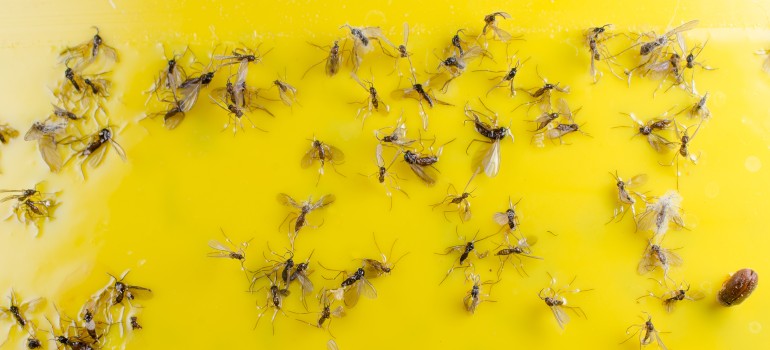

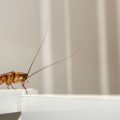


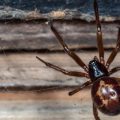
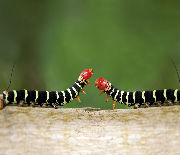
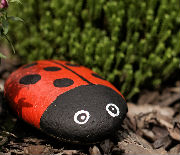
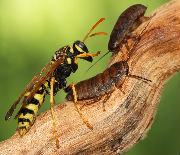
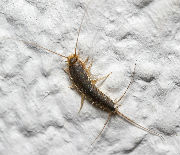
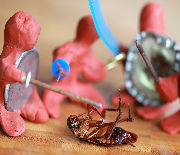
Leave a Reply